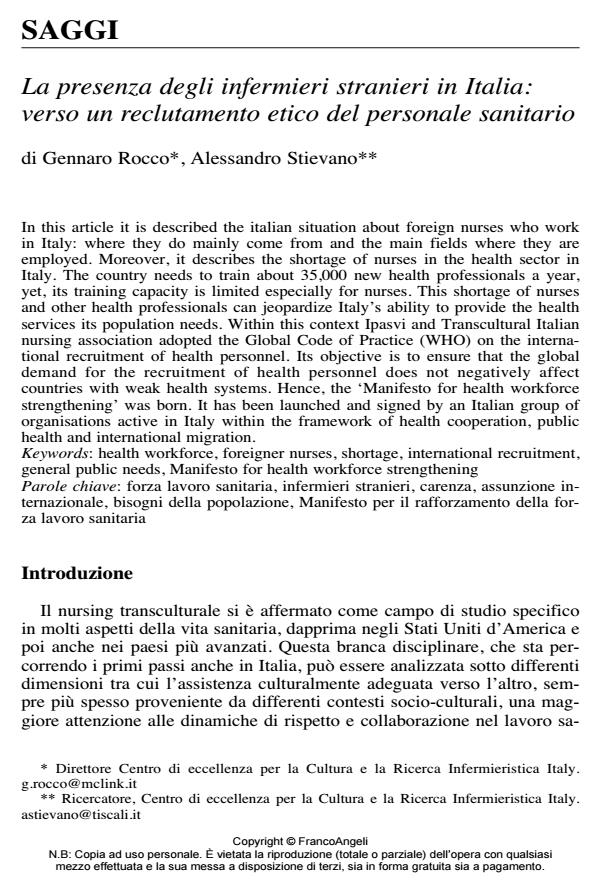La presenza degli infermieri stranieri in Italia: verso un reclutamento etico del personale sanitario
Titolo Rivista SALUTE E SOCIETÀ
Autori/Curatori Gennaro Rocco, Alessandro Stievano
Anno di pubblicazione 2013 Fascicolo 2013/3
Lingua Italiano Numero pagine 14 P. 19-32 Dimensione file 109 KB
DOI 10.3280/SES2013-003003
Il DOI è il codice a barre della proprietà intellettuale: per saperne di più
clicca qui
Qui sotto puoi vedere in anteprima la prima pagina di questo articolo.
Se questo articolo ti interessa, lo puoi acquistare (e scaricare in formato pdf) seguendo le facili indicazioni per acquistare il download credit. Acquista Download Credits per scaricare questo Articolo in formato PDF

FrancoAngeli è membro della Publishers International Linking Association, Inc (PILA)associazione indipendente e non profit per facilitare (attraverso i servizi tecnologici implementati da CrossRef.org) l’accesso degli studiosi ai contenuti digitali nelle pubblicazioni professionali e scientifiche
In this article it is described the italian situation about foreign nurses who work in Italy: where they do mainly come from and the main fields where they are employed. Moreover, it describes the shortage of nurses in the health sector in Italy. The country needs to train about 35,000 new health professionals a year, yet, its training capacity is limited especially for nurses. This shortage of nurses and other health professionals can jeopardize Italy’s ability to provide the health services its population needs. Within this context Ipasvi and Transcultural Italian nursing association adopted the Global Code of Practice (WHO) on the international recruitment of health personnel. Its objective is to ensure that the global demand for the recruitment of health personnel does not negatively affect countries with weak health systems. Hence, the ‘Manifesto for health workforce strengthening’ was born. It has been launched and signed by an Italian group of organisations active in Italy within the framework of health cooperation, public health and international migration.
Parole chiave:Forza lavoro sanitaria, infermieri stranieri, carenza, assunzione internazionale, bisogni della popolazione, Manifesto per il rafforzamento della forza lavoro sanitaria
Gennaro Rocco, Alessandro Stievano, La presenza degli infermieri stranieri in Italia: verso un reclutamento etico del personale sanitario in "SALUTE E SOCIETÀ" 3/2013, pp 19-32, DOI: 10.3280/SES2013-003003